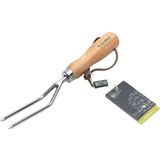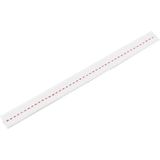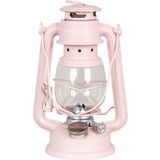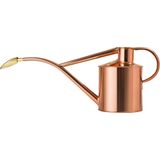Self-Sufficiency - How do I start my own vegetable garden?
Growing vegetables at home is a great way to save money while getting up close and personal with nature. Growing your own vegetables is not only the first step towards self-sufficiency and saves you money, you will also find that the taste and texture of crops grown in your own garden surpass those found in the supermarket. Plus, maintaining a vegetable garden is excellent exercise and great for your mental and physical health! Here are our tips:
Start with a small garden
If you're just starting out, it's best to start small. It is better to be amazed by what you produce in a small garden than to be frustrated by the amount of time it takes to maintain a large garden. It also makes sense to learn the basics of gardening before investing large amounts of time and money in your new hobby. This will give you a sense of how much time gardening takes. You'll find out if you enjoy spending time outside planting, watering, and weeding, and you'll learn how much you and your family can eat over the course of a summer. All of these things are important when it comes to expanding your plot.
A good size for a beginner vegetable garden is 3x3 meters. To get started, just pick up to five vegetables to grow and plant a selection of each. You will get loads of fresh produce for your summer meals and it will be relatively easy to keep up with the work. You can of course also start with a smaller bed (the vegetables won't mind).
To make your small, but productive vegetable garden look great, you can make a border. This keeps the bed looking well-groomed and neat. Choose from a variety of decorative options according to your personal style.
Grow whatever you like best
Ask yourself you like to eat. Your answer will tell you what to grow in your vegetable garden. Before you pick up the shovel, however, you should also consider the following:
How Many Vegetables Do I Need?
Think about how much you and your family will eat and how likely it is that you will freeze, can, or give away any excess produce. Then be realistic about how much you will have to sow. (Many beginners make the mistake of overplanting.) Vegetables like tomatoes, peppers, and pumpkins provide supplies all season so you may not need many plants to meet your needs. Other vegetables, such as carrots, radishes, and corn, can only be harvested once and must then be replanted.
Successive cultures
If you plant crops for both cool and warm weather, you will be able to harvest throughout the spring, summer, and autumn. Grow lettuce, greens (e.g. rocket), peas, radishes, carrots and broccoli in early spring. After harvesting, plant your warm-weather favourites like tomatoes, peppers, eggplants, and herbs. In autumn, you harvest potatoes, cabbage and kale.
Planting system
As a planting system for your vegetable patch, the tried and tested mixed culture is the perfect starting point, i.e. the cultivation of different plants with similar nutrient requirements in the same patch.
Later, when you already have several beds, you should change the bed annually as part of the crop rotation between plants with heavy, medium and low nutritional requirements. The nutrients will therefore not be leached from the soil and pathogens will be unable to accumulate. The aim of this cultivation method is the targeted prevention of soil fatigue, diseases and pests.
A mixed culture guarantees the best harvest.
The art of professional planning in mixed culture also lies in correctly combining individual plants. Different plants don't always grow well together; often the nutritional requirements are simply too different. A classic example is growing peas and beans side by side. This is a disadvantageous mixed culture, although both varieties have low nutritional requirements.
The right place
There are three basic requirements for the successful planting of a vegetable garden: sun, water and soil quality.
Choose your growing site wisely. If you set up your vegetable patch in the back of the garden, expect to walk long distances for watering and gardening. Moving your vegetable garden closer to the house makes it easier to harvest fresh vegetables or pick a handful of herbs while you cook.
The amount of sun
Be sure to think about exposure to the sun. Orient your garden from north to south for maximum sun exposure; when plants are positioned from east to west, they tend to shade each other too much.
Like all plants, vegetables also need a lot of sunlight. The fastest-growing vegetables need at least 6 to 8 hours of direct sunlight a day and not to be blocked by trees, shrubs, or fences. So sun-loving vegetables will not thrive in shady places.
If your garden offers partial shade, plant vegetables and herbs that can tolerate these conditions, such as kale, Swiss chard, spinach, chives, coriander, parsley or thyme.
Root vegetables like carrots, radishes, and beets are suitable if your location receives at least 4 hours of direct sunlight per day.
The amount of water
Smart watering is the key to success in the garden, especially in warm, dry regions. Frequent watering is essential for the first few weeks post-germination or after the seedlings are planted. Once your plants are well established, it is better to water your garden copiously every few days instead of a little every day.
In order to be sure when it is time to water again, examine the soil about 10 centimetres below the surface. If it feels dry, watering is the order of the day. It's good to do this on rainy days too, because sometimes the rainwater runs off instead of seeping into the ground.
The right soil
Your vegetable garden needs the best soil to get the best harvest. If you are not sure what type of soil you have in your garden, the best thing to do is to send a sample to a government-approved soil testing laboratory. You can also determine the type of soil yourself, and there are guides on how to do this on the internet. Soil conditions affect drainage and the availability of nutrients.
Once you know more about your soil, start improving it little by little. To do this, add more and more organic material over time, e.g. compost. Just work it into the ground with a rake. But never step on freshly tilled soil as it will compact and all your hard work will have been in vain. Then rake the surface smooth and water well. Let the bed rest for a few days before planting the seeds.
In summary, the perfect location for a vegetable garden has the following characteristics:
- a sunny to partially shaded location
- airy, but protected from strong winds
- close to the house
- loose, nutrient-rich soil
- structurally stable, yet permeable soil
- moist, with no tendency towards waterlogging
Plan your vegetable garden
When planning your vegetable garden, choose either row cultivation or intensive cultivation (both have their advantages!).
Row cultivation
Place the plants one by one in rows appropriately spaced so that you can easily walk between them. This approach makes the most sense for large vegetable gardens, as rows facilitate the use of mechanical devices. The downside is that the space for the walkways limits the number of plants you can plant.
Intensive cultivation
Increase the productivity of your garden with intensive cultivation, which means placing two or three plants close together in a bed about a metre wide. The seeds are sown or the plants are placed in such a way that their leaves hardly touch each other when they ripen. This method, which uses almost every square inch of the soil, works well for most vegetables, except for vine-like plants such as cucumbers. The downside to this method is that you have to weed by hand because the plants are growing so close together.
Selecting the vegetables
When choosing which vegetables to plant, pay close attention to the description on the packaging. Each type of vegetable has its specific advantages. Some produce smaller plants that are ideal for small gardens. Other strains offer better disease resistance, higher yields, or better heat or cold tolerance. Start by choosing which vegetables you enjoy eating, then do some research on the different varieties and the specific needs they have.
Seeds or young plants?
Decide whether you want to grow vegetables from seeds or buy young plants from the garden centre. Once you've decided on seeds, keep in mind that most annual vegetables should be grown indoors from about six weeks before the last frost. However, some plants (e.g. carrots, beans and peas) can also be sown directly into the ground.
You may prefer to buy seedlings from a nursery or garden centre and plant them in your garden. This method works best for slow-growing crops like broccoli, celery, and kale. Note that seedlings will ripen earlier and give you a quicker harvest than plants grown from seed. Since they are stronger when planted in the garden, they are also a bit more resistant to pests.
Caring for your vegetable garden
After putting so much effort into planning, preparing, and planting, it would be a shame to let the garden wither over the course of the summer. Follow these steps to help your garden thrive.
Weed weed weed
Weeds compete with your vegetables for light, water, and nutrients, so it's important to keep them to a minimum. Remove weed seedlings from the garden regularly. A mulch layer of clean straw, compost, or the like can keep weeds at bay around larger plants like tomatoes.
Fertilise
Fertilising your vegetables will help maximize the yield. Organic gardeners often find that adding good quality compost at planting time is all their vegetables need. Other gardeners have different opinions and use different fertilisers. Find your sweet spot through trial and error.
Act against pests
Picking up large insects and caterpillars by hand is a safe and effective way to control a limited infestation. Unfortunately, this is rarely sufficient for larger numbers of pests. Pesticides often have to be used. Inform yourself about all products offered, choose a product that has the least impact on the environment and then carefully follow the manufacturer's instructions.
Fight fungal diseases
It is always best to water the soil instead of letting the leaves of the plants get wet. This will reduce the likelihood of fungal diseases. If you use a sprinkler, turn it on in the morning so the leaves are dry again by dark. If a plant becomes infected with a disease, remove it from the bed immediately and throw it in the trash. DO NOT put sick plants on the compost heap.
Fortunately, there are already many plants that are reasonably disease resistant. If you choose these, you will have fewer problems. In addition, annually changing the location of the plants prevents diseases from permanently settling into the soil.
Harvest vegetables
Harvesting your vegetables is what gardening is all about. Many vegetables can be harvested multiple times. For many varieties, the more you harvest, the more the plant will produce. We wish you a lot of fun and the delicious enjoyment of your vegetable patch!
Latest reviews
-
 € 17,09
€ 17,09Delivery by October 11
-
 € 1,49
€ 1,49Delivery by October 18
-
 4.0 (2)
4.0 (2)Strömshaga "Hurricane" Petroleum Lamp, small, Pink
-7%- Pink
- Dark blue
- Classic design
- Beautiful colour selection
- For indoor & outdoor use
€ 25,65 € 27,49Delivery by October 11
-
 3.7 (3)
3.7 (3)HAWS Classic Indoor Copper Watering Can - 1 L
- For controlled pouring
- Elaborate manual work
- Makes a charming decoration
€ 95,49Delivery by October 11
Magazine Articles:
-
Austria: Free standard delivery from € 39,90
-
Free
returns -
24-hour shipping
More than 11.800 products

